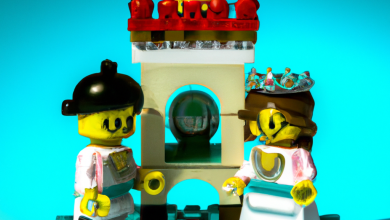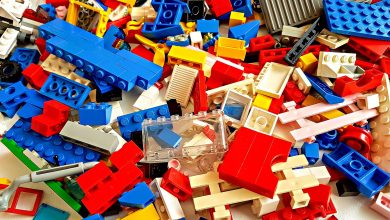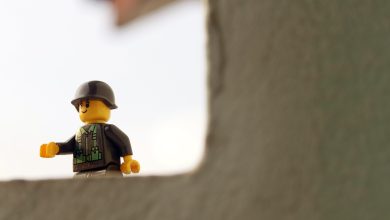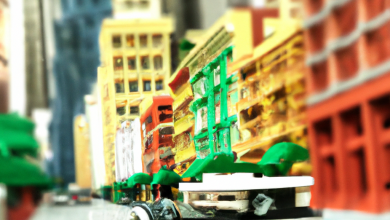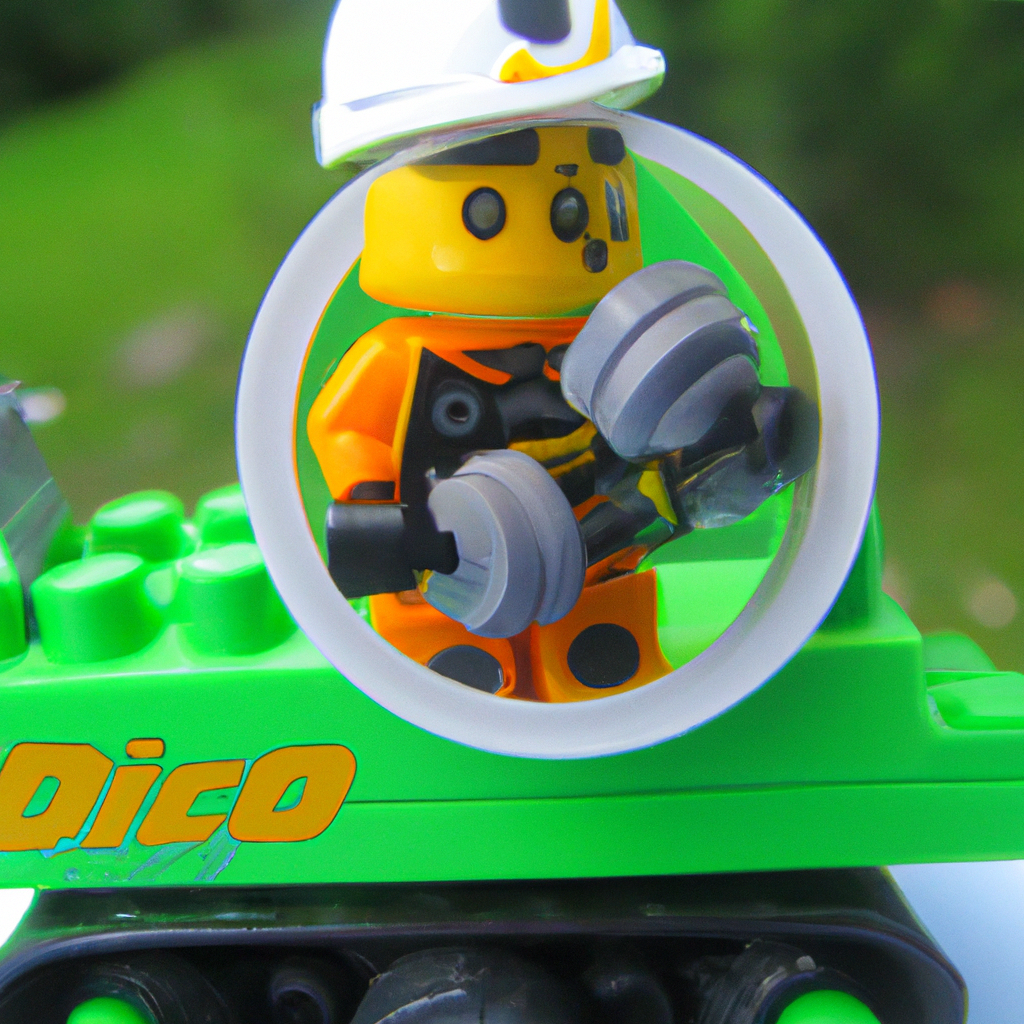
I. Introduction
Introduction: The Art of Lego Construction
Lego has become a global phenomenon that has captivated people of all ages for decades. With its endless combination of colorful bricks, people have been creating various pieces of art one brick at a time. Lego construction has become a beloved hobby and craft that provides endless hours of joy and satisfaction. In this article, we’ll explore the ins and outs of Lego construction and provide some tips and tricks for building your own Lego masterpieces.
Explanation of the Popularity of Lego Construction
Lego construction has gained popularity due to its versatility and endless possibilities. Building with Lego allows people to unleash their creativity, develop their problem-solving skills, and provides a fun activity for all ages. Many individuals find joy and satisfaction in the feeling of accomplishment when building something with their own hands. Lego is a medium that has proven to be adaptive to modern trends and allowed builders to create anything from famous landmarks to their favorite cartoon characters.
Brief History of Lego Construction
Lego construction has been around since the 1930s. The company was founded in Denmark by Ole Kirk Christiansen, who began by making wooden toys. However, he eventually switched to plastic and began producing the first Lego bricks in 1949. Since then, Lego has become a household name and is loved by millions all around the world.
Lego sets have evolved over the years, with the first sets being simple and consisting of basic bricks. Nowadays, Lego sets are highly detailed and complex, featuring a wide range of pieces, colors, and textures. Lego sets allow people to build their favorite cars, buildings, and characters from their favorite movies and TV shows.
In conclusion, Lego construction has become a beloved hobby that has captured the hearts of people all over the world. With its endless possibilities and versatility, it allows people to unleash their creativity and build their own personal masterpieces. Stay tuned for our upcoming tips and tricks to help you improve your Lego building skills.

II. Understanding the Basics
Lego construction employs a wide variety of pieces, each with its unique shape and function. Understanding the different types of Lego pieces is a crucial step in successfully building any creation, whether it’s a Lego set or a custom creation. The most common types of Lego pieces include:
1. Bricks- Bricks are the fundamental building blocks of Lego construction. They are the rectangular or square-shaped pieces that come in a range of sizes and colors.
2. Plates- Plates are thinner than bricks but come in the same width and length options. They are useful for adding layers or creating surfaces with minimal height.
3. Slopes- Slopes have angled surfaces and are commonly used for structural support or adding variety to a structure design.
4. Technic pieces- Technic pieces are more intricate and specialized bricks that add moving parts and complexity to Lego constructions. They include gears, axles, and connectors.
5. Minifigures- Minifigures are the small, human-like figures that Lego uses in most of its sets.
It is essential to store and organize your Lego pieces for easy access and simplified building. There are several recommended methods for store and organization, including:
1. Storage Containers- Storage containers are an excellent option for managing Lego bricks by type, size, or color.
2. Shelves- Shelves allow for organization of larger pieces and sets. They can also function as a place to display your completed creations.
3. Drawers- Drawers can also be used to house and organize Lego sets and pieces alike.
Overall, understanding the different types of Lego pieces and the best practices for organization and storage is key to creating successful Lego constructions. Whether you’re building from scratch or following instructions from a set, organizing all of your pieces beforehand can help streamline the building process and avoid any frustration.
III. Tips for Building Lego Sets:
Lego construction sets have clear instructions that guide you on how to build the different models. However, it’s essential to apply some tips and tricks to make your building experience more effective and enjoyable.
1. Reading the instructions carefully:
The instructions are designed to help you build an appealing Lego model while making sure that all the pieces fit nicely together. It’s critical to pay close attention to the instructions and follow them step-by-step. Make sure that you understand each step before proceeding to the next.
2. Sorting pieces before building:
Sorting the pieces before building is a crucial tip that saves time, reduces frustration, and makes the process more efficient. Once you’ve opened the set, take the time to organize the pieces into different categories based on their shape, size and color. This will help you avoid the hassle of finding each piece as you build.
3. Building in sections:
Building in sections involves creating smaller parts that you can later assemble into the final structure. It’s easier to concentrate on small sections than try to tackle the entire model at once. Start with the building blocks of the model, such as the base and work your way up.
If you utilize the above tips on building Lego sets, you will find that the process is much smoother and enjoyable. In addition to these tips, it’s also important to have patience, concentration and to take breaks as needed. Also, don’t be afraid to experiment with the models and make minor modifications to make them your own. Ultimately, building with Lego is about having fun and expressing your creativity in exciting and unique ways.
IV. Techniques for Designing Your Own Lego Creations
Lego construction is not just about following instructions and building from pre-made sets. In fact, a whole world of possibilities exists when it comes to creating unique and original Lego creations. However, designing your own Lego creations can be a daunting task. Here are some tips and techniques to keep in mind when designing your own Lego creations.
1. The importance of planning
Before diving into a Lego build, it’s important to have a plan. This can range from outline sketches to detailed blueprints, depending on the complexity of your project. It’s important to have an idea in mind of what you want to create and to start visualizing it before you start to build. This will save you time and confusion in the long run.
2. The role of color and texture
Color and texture are two key elements that can add depth and personality to your Lego creations. Here are some tips to keep in mind when working with color and texture:
– Use a variety of colors to add visual interest to your creation
– Consider using different types of Lego pieces, such as bricks, plates, and tiles, to add different textures to the surface of your creation
– Think about creating patterns or mosaics using different colored tiles or plates
3. Incorporating unique or complex shapes
One of the great things about Lego is that it’s a versatile building material, allowing you to create unique or complex shapes. Here are some tips to keep in mind when designing complex shapes:
– Use different sizes and shapes of Lego pieces to create rounded or angled shapes
– Think about creating interlocking sections to give your creation stability and add visual interest
– Experiment with different types of pieces, such as arches or hinges, to create structures that have movement or flexibility
Overall, the key to designing your own Lego creations is to experiment and have fun. Don’t be afraid to try new techniques or work with different types of Lego pieces. With a little bit of planning and creativity, you can create amazing Lego creations that are all your own.
V. Advanced Building Techniques
Lego construction is not just for kids anymore. With the growth of online communities and conventions dedicated to Lego enthusiasts, building with Lego bricks has become a serious hobby for many adults around the world. For those who have already mastered the basics of Lego construction, it’s time to level up and explore some advanced building techniques.
Studless Building
One of the more advanced techniques in Lego construction is studless building. Instead of using the traditional Lego bricks with studs on top to connect one piece to another, studless building utilizes elements like plates, tiles, and modified bricks that have a smooth surface. The advantage of this technique is that it offers more flexibility in the design and enables you to create complex, curved shapes that are aesthetically pleasing.
Incorporating Technic Pieces
Technic elements are another way to add a higher level of complexity to your Lego creations. Technic pieces are typically used for building moving parts, such as gears, axles, and motors. These pieces can be incorporated into your builds to create motion or add functionality to your designs. When used correctly, technic elements can add a sense of realism and intricacy to your Lego creations.
Adding Motorization
For those looking for a truly advanced building experience, adding motorization to your Lego creations is the way to go. This technique requires some specialized parts and a bit of technical know-how to implement, but the results can be truly amazing. By adding motors and controllers, you can make your Lego creations move and come to life, whether it’s a car, a robot, or even a rollercoaster.
Overall, advanced Lego building techniques require time, patience, and a willingness to experiment. Studless building, incorporating technic pieces, and adding motorization are just a few of the many ways to take your Lego creations to the next level. With practice and persistence, you can push the limits of what’s possible with Lego bricks and impress your fellow builders with your unique and innovative designs.
VI. Inspiration and Resources
One of the most exciting aspects of Lego construction is the limitless potential for creativity and innovation. Here are a few places to find inspiration for your next Lego masterpiece:
Places to find inspiration for Lego creations:
1. Real-life architecture: Lego is not just for playtime- some of the most impressive Lego creations are inspired by real-life architecture. From the Eiffel tower to the San Francisco Golden Gate Bridge, you can find inspiration for almost any building.
2. TV and Movies: Many Lego builders are enthusiasts of TV and movies. Lego has released some popular movie sets, including Star Wars and the Marvel Cinematic Universe. You can recreate your favorite scenes from movies or create your own spin-off story.
3. Nature: Nature is another great source of inspiration. You can create everything from flowers to farm animals to jungle scenes with Lego bricks.
Online resources for Lego builders:
1. Lego.com: Lego’s official website has information on new Lego sets, theme parks, events, and even a free digital designer program where you can design your own Lego models.
2. Lego fan communities: There are many fan pages, fan clubs, and forums for Lego builders. These communities are a great place to connect with other Lego enthusiasts and share ideas and techniques.
3. Instagram: The popular social media platform, Instagram, is an excellent source for Lego creations inspiration. Dozens of Lego builders post their creative designs regularly.
Lego conventions and communities:
If you are looking for a more immersive Lego experience, you should consider attending a Lego convention. At these conventions, you can see impressive Lego creations, attend workshops to polish your building skills, and meet other Lego enthusiasts. Some of the most popular conventions are:
– BrickCon: The longest-running Lego convention in America, held annually in Seattle.
– BrickFair: The largest fan-created Lego event in America. Takes place in Virginia and Alabama.
– Lego World: A series of international events organized by Lego. These events focus on showcasing new Lego products, but also welcome fan-made creations.
Overall, the possibilities with Lego construction are endless. By exploring these resources, you can find inspiration, tools, and a community that can help transform your ideas into stunning Lego creations.
VII. Conclusion
Lego construction is an immensely popular hobby around the globe, and it is easy to see why. Lego blocks are a versatile and accessible way to build all kinds of creations, from complicated sets to your own unique designs. Whether you are a child or an adult, building Lego sets and designing your own constructions can be a challenging, yet rewarding experience.
To ensure your Lego constructions turn out as you planned, it is important to understand the basics of Lego construction, such as knowing the different types of blocks and organizing them in a way that makes sense. Additionally, reading building instructions carefully and sorting the pieces before you start is crucial to avoiding mistakes.
When it comes to designing your own Lego creations, there are many techniques that you can use to make your constructions unique and interesting. Planning your builds, considering color and texture, and incorporating unique shapes can all help you create a truly one-of-a-kind creation.
As you become more experienced in Lego constructions, you may want to delve into more advanced techniques, such as studless building, technic pieces and motorization. These can add more functions and features to your builds, allowing for even greater creativity and complexity.
Finding inspiration for your Lego constructions is crucial too, and fortunately, resources like online communities, tutorials, and conventions abound. These can help you connect with other enthusiastic Lego builders and broaden your horizons.
In conclusion, building with Lego is a highly enjoyable and rewarding hobby, and the possibilities for creativity are virtually endless. By following the tips and techniques discussed in this article, you can produce beautiful and complex Lego constructions that will delight you, your friends, and family for years to come. So go ahead, experiment, have fun, and let your imagination run wild!
